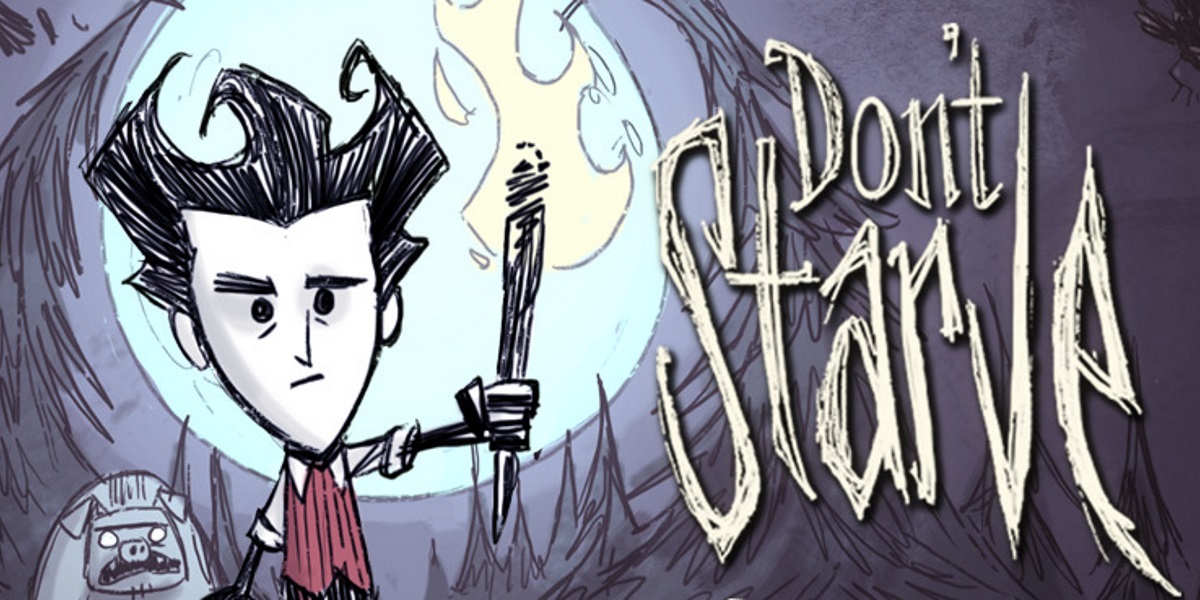If you’re not mainly a PC gamer, you might not be aware of Don’t Starve, a ridiculously successful indie minecrafty roguelike that came out in 2013. Its main claims to fame were the Burtony-Goreyesque graphics and the fact that you were dropped into the game with nary a clue about what to do, and then you just went ahead and did it anyway. Oh, and you die a lot. Do you like games where you die a lot? Unlike many roguelikes, it’s acutally more Rogue-ish than usual, and I’ll explain why.
Don’t Starve has you playing as Wilson, a hapless scientist who, after being misled in an experiment, managed to get himself teleported to a land of milk and honey horrible death, dismemberment, and yaks. Now his sole job is to just survive and make do with what odds and jetsams he can scrounge from the surrounding land. The game is fairly old-school. There are no tutorials and you’ll be lucky to survive the first three days. Wilson has three different states that you need to look after: hunger, sanity, and health. It may not sound a lot, but it becomes quite a juggling act between harvesting what you want and seeing to those needs.
As you start harvesting things, you eventually learn to craft objects and items that help expand the amount of things you can do and gather, helping you in turn survive longer. The list of things you can initially craft is tiny–an axe, or a single campfire, for example–but the list grows quickly as you scrounge up more and more stuff, and this is where the game really opens up and where you find yourself becoming addicted. Until your inevitable death. But you’ll learn to last longer and longer each time. With each death, you earn experience points that allows you to unlock more characters with different needs and abilities.
The Wii U version of the game comes with the Reign of Giants expansion pack (but not the Don’t Starve Together expansion), which can be disabled before starting the game. It’s highly recommended that you start the game in vanilla mode for at least the first few incarnations, but unless you’re fairly experienced with the game already, you’ll probably notice very little change, at least in the first two or three days. The Wii U version also allows for off-TV play, something I’ve always loved about the Wii U. The only huge issue is the text size, both on- and off-TV. It’s fairly clear that the game was made for PC first and then ported without considering differing viewing distances and screen sizes.
I didn’t encounter any glaring problems with the Wii U version that weren’t already endemic to other versions of the game. Like the original Rogue, the longer you play, the greater your risk of dying, and the more you stand to lose when you do, with nothing to show for it but a tombstone. You’ll find that the first few days of every game starts in exactly the same way, even though the game world is randomly generated each time, and getting through these first few days becomes a chore. Obviously, things get a lot better after that.
Obviously, this is one game you have to play. There’s a lot of replayability here—it’s mandatory, in fact!—and the fact that you have to figure things out yourself means you’ll feel more rewarded for the “aha!” moments. It’s puzzling, devilish, and a hell of a lot of fun, especially if you enjoy sandbox-style roguelikes. It’s not quite Minecraft or Terraria, but something uniquely its own.
Final Score: 8.5 Starving Prawns out of 10
Detailed information:
Developer: Klei Entertainment
Publisher: Klei Entertainment
Platforms: Nintendo Wii U (reviewed), Steam, PS4, PlayStation Vita
Age Rating: PEGI 12
RRP: R182 (Nintendo eShop)
Website: http://www.dontstarvegame.com/





